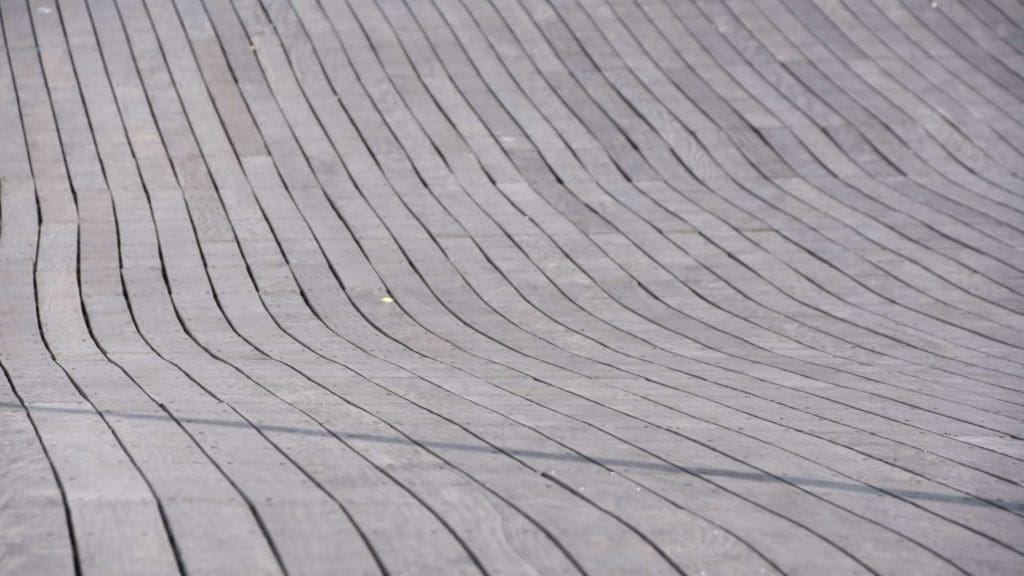Sloping or uneven floors are a common issue, especially in older Houston homes. If the floors in your home are sloping, the most worrying aspect isn’t necessarily that they’reno longer level but rather that your foundation has sustained some damage that might have adversely impacted your floors as well. Since a sloping floor can tell you a lot about the condition of your foundation and home, let’s take a look at some underlying causes of this problem.
What Causes Sloping Floors in a Home
There are several factors that can cause a sloping or uneven floor. To begin with, a sloping floor can be a sign that wood beams and/or floor joists have deteriorated. While this problem needs to be fixed so that the floor can be brought back to its level position, deteriorated wood beams and/or floor joists aren’t always the result of a foundation problem. In fact, more often than not, wood beams and/or floor joists deteriorate due to repeated changes in their moisture content. On the other hand, if differential settlement and/or deteriorated piers are found during a foundation inspection, your sloping floor has most likely been caused by an issue with your foundation.
Since the problems causing a floor to become uneven along with their severity can vary greatly from house to house, knowing how to identify the potential underlying issues could go a long way toward hiring the right contractor from the very beginning. Generally, sloping floors occur as a result of:
- Excess Moisture
Moisture buildup in the crawlspace and water accumulating in the soil underneath the foundation are the most frequent causes of foundation problems and sloping floors in homes. Excess moisture or water can come from a leaky pipe or swimming pool located close to your home, clogged gutters overflowing during heavy rainfall, poor ornegative drainage, and flooding. Regardless of its underlying causes, excess moisture or water will cause the structural wood in your foundation and subfloor to expand. That could lead to different issues, which range from sloping, buckling, and warping in your floor to extensive structural damage throughout your home. If the problem is left unaddressed, the wood may also start rotting.
But even if the problem that has initially led to moisture or water accumulation in wood is fixed in a timely manner, it could still cause sloping in your floor. That’s because wood tends to warp, bow, crook, and cup when its moisture content changes unevenly or suddenly.
Fortunately, the moisture- and water-related problems causing sloping floors are usually repairable, provided the damage isn’t too extensive. In most cases, the repair involves addressing the underlying cause of the damage first (e.g. fixing any leaky pipes or cracks in swimming pools, cleaning clogged gutters, regrading the ground around the foundation, and flood-proofing your home—which can be done byhaving it elevated above the BFE) and then repairing or replacing the wood affected. - Temperature Variations
When wood is exposed to high temperatures, it tends to expand. This process is commonly known as thermal expansion. Thermal expansion is usually followed by thermal contraction, which occurs when the temperature decreases. Even though wood has a lower coefficient of thermal expansion and contraction compared to other materials, how much it expands and contracts depends on its type, grain direction, and any treatments applied. However, repeated thermal expansion and contraction almost always lead to wood warping over time.
Another essential thing to know is that wet wood contracts more than wood that hasn’t been exposed to moisture or water. If your foundation beams, floor joists, or sections of your house framing absorb a lot of moisture or water during the wet season, they can expand considerably. Once dry, hot weather returns, the wood will start to lose moisture and dry out, shrinking considerably. Because wood may not dry out at the same rate across the structure,warping and curling may occur during the process, potentially causing unevenness and sloping in your floor.
Protecting structural wood from rain, water, and sunlight is the easiest way to prevent the negative effects that moisture and temperature variations could have on your floors. That can be done by enclosing your crawlspace and applying special wood treatments. - Differential Settlement
When clay soil gets wet, it expands. But this type of soil also shrinks considerably when it dries out. All this movement could cause your foundation to settle unevenly, which may affect the subfloor and cause the floor on top to become uneven.
Differential settlement is usually a complex issue that can be quite costly to address. Of course, this all depends on its underlying cause(s) and the extent of the damage. To properly and permanentlyfix the problem, it’s important to consult with a reputable foundation repair contractor whose extensive experience can guarantee the best results possible.
A sloping or uneven floor is one of the most common indicators of foundation problems. Thus, it shouldn’t be ignored. At Allied Foundation, we offer free foundation estimates and custom solutions that can make your foundation, floor, and home safe again for many years to come. To schedule your complimentary foundation consultation,contact us today!



